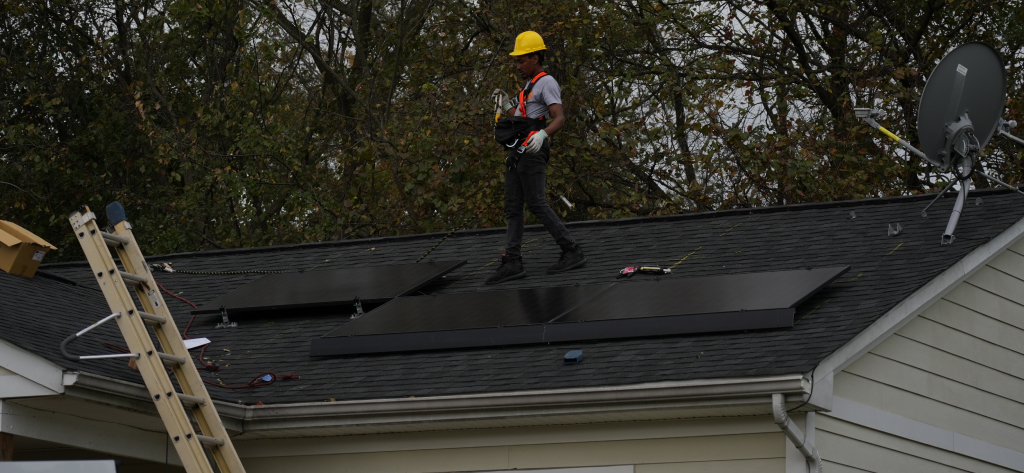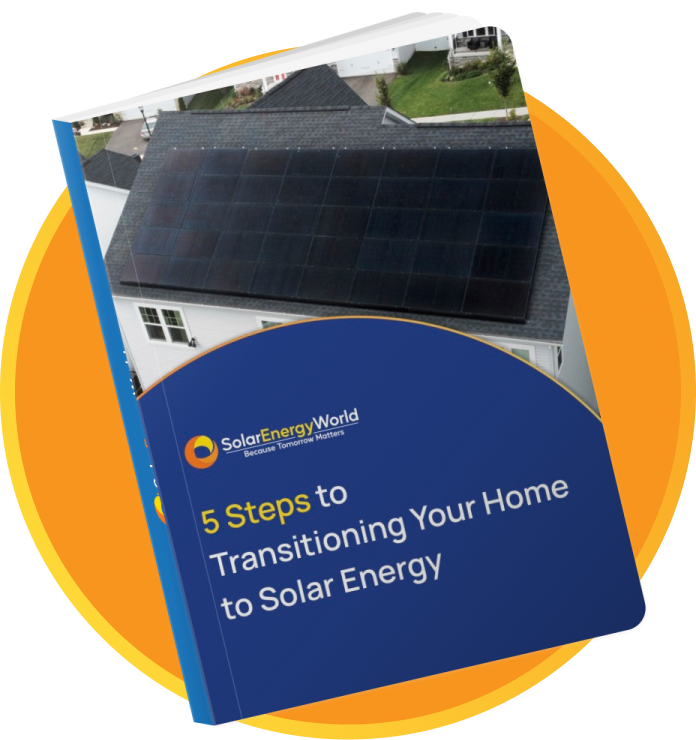Article
What is the Best Roofing Material for Solar Panels?

Your roofing material can impact your ability to install a solar panel array and affect your system’s performance and longevity. Certain components are better equipped to work with rooftop solar panels, so choosing the right style is essential. Whether you’re building your dream home, you’re in the market for a new roof, or you’re curious about the compatibility of your existing infrastructure, you’ll want to know which roofing material is best for solar panels and why it matters in the first place.
Factors to Consider When Choosing Roofing Materials for Solar Panels
Before purchasing a shiny new solar panel array, consider how your roofing material can work in your favor or inhibit your sustainability goals. Here are some of the key features to keep in mind when choosing the best roofing material for solar panels:
Durability
A typical solar panel array has a lifespan of 25 to 30 years, so you’ll want a foundation that lasts even longer to ensure your home’s safety and structural integrity. Even among various types of asphalt shingles, the expected longevity ranges from 12 to 40 years. Choosing a durable material that won’t limit the lifespan of your solar setup will help you get the most out of your alternative energy solution.
Mounting Compatibility
Some roofing materials don’t work well for solar panels because they complicate the installation process. Brittle substances like wood and slate can create an unstable foundation for your panels, while clay tiles may require panels to be mounted above the roof’s surface. The solar panel system you choose will include compatible framing and hardware, which you must take into account.
Aesthetics
Of course, the best roofing material for solar panels should balance form and function. The option you choose should align with your home’s aesthetic style for maximum curb appeal while also serving as a solid surface for your panels.
Climate
Local weather and environmental factors like heavy snowfall or excessive rain will also affect your choice of roofing material. For example, homes in hurricane-prone areas may fare better with a sturdy roof that can withstand extreme winds.
You’ll also need to consider how heat may impact your solar array’s performance. Shiny metal roofs reflect more sunlight and keep your panels cool, which boosts efficiency. Heat-absorbing asphalt shingles have the opposite effect.
Cost
The cost of your roof will vary depending on the complexity of your home’s design, the material you choose, the square footage of your roof, and your geographic location. You can expect to pay between $7,500 and $70,000 for a new roof. Remember, the long-term savings from solar energy production may help offset these costs over time.
Best Roofing Materials for Solar Panels
Now that we’ve covered the basics, let’s look at some of the best roofing materials for solar panel installation.
Asphalt Shingles
Asphalt or composite shingles are among the most popular roofing materials in the US. They’re typically more affordable than other options and last between 15 and 30 years. They also allow for quick and easy installation.
These substrates haven’t always been considered energy efficient, though. After all, they don’t reflect much sunlight and tend to absorb heat rather than deflect it. While newer formulations are more sustainable, they can still reduce the efficiency of your solar panels by exposing them to excess heat.
Metal Roofs
Asphalt shingles may be prevalent due to their low sticker price, but metal roofing materials just might be the best choice for solar panels. They’re incredibly durable, boasting lifespans from 40 to 70 years. In some cases, your solar installation expert may not even need to drill into your metal roof to secure your new panels.
You’ll find many different types of metal roof configurations, including standing-seam and screw-down varieties, in materials like aluminum, steel, and galvalume. These options can be highly efficient due to their reflective qualities, making them a thoughtful choice for solar installations.
Clay and Concrete Tiles
Tile roofs are a premium aesthetic option found on many Spanish- and Mediterranean-style structures. They’re particularly durable against environmental elements and offer enhanced energy efficiency when compared to alternatives like asphalt shingles. Tile roofs can also last 50 years or more, well beyond the lifespan of a new solar array. However, clay and concrete tiles can make solar panel installation tricky.
Clay and concrete tiles present some challenges to solar installers, but it isn’t impossible. Your technician may remove select tiles to make way for mounting brackets and other hardware. There’s a good chance your panels will be situated above the tiles to avoid damage.
Tar and Gravel
While the best roofing material for flat roofs may be tar or gravel, the substance you choose will impact your solar panels less than the slope of your roof – or lack thereof. Flat rooftops often require additional mounting hardware to align your panels for optimal sun exposure.
Wood and Slate Roofs
When it comes to compatibility, wood shakes and slate tiles are not the best roofing materials for solar panels. Although each offers enhanced longevity under normal conditions, both pose a number of disadvantages that must be addressed before solar installation. For example, these materials can easily chip or break under the excess weight of a solar panel array. Additionally, some jurisdictions won’t allow solar panels on wooden roofs due to increased fire risks.

How to Switch to Solar in 5 Simple Steps
Roof Preparation for Solar Panel Installation
No matter your roofing material, you’ll need to take certain steps to ensure the best possible outcome of your solar panel installation. First, consider hiring an engineer to inspect your roof for signs of structural damage and excessive wear. They’ll assess your roof’s age, materials, and maintenance history to determine whether your roof’s remaining lifespan and structural integrity are fit for a new solar installation.
Of course, even relatively new roofs may require a bit of attention before adding additional weight. A structural engineer should be able to identify any areas of concern and guide you in the right direction to resolve existing problems.
Maintenance and Longevity of Roofing Materials
Properly maintaining your roof can extend its lifespan and make it easier for solar technicians to install a new solar panel array. However, different roofing materials and layouts require different levels of upkeep. For example, clay tiles are among the most durable on the market, but you must perform regular inspections to ensure no tiles have sustained damage that may allow leaks and other problems down the line.
The materials comprising your roof will make a significant impact on its overall lifespan. Here’s a breakdown of how long you can expect the most popular roofing materials to last before adding solar panels:
- Asphalt shingles: 15-30 years
- Metal: 40-70 years
- Clay and concrete tiles: 50-70 years
- Wood: 30-50 years
- Slate: 75-100 years
While wood and slate boast impressive longevity on their own, it’s important to remember that damage and excess weight can drastically diminish their lifespans.
Making the Right Choice for Your Roofing and Solar Panel Setup
If your roof is made of metal, asphalt shingles, or tile, there’s a good chance that you’re a great candidate for solar panels. Under ideal conditions, these roofing materials are among the best to withstand the added weight of an alternative energy setup and continue performing for the lifespan of your solar panels. However, people with other roofing constructions shouldn’t give up hope. Solar installation experts may be able to work with your existing infrastructure to create a sustainable solution. You can also consider ground-mounted solar panels as an alternative.
At Solar Energy World, we’re passionate about bringing renewable energy to everyone. Contact us today to schedule a free solar assessment!
Want a Free Solar Estimate?
Fill out the form to get started today.


